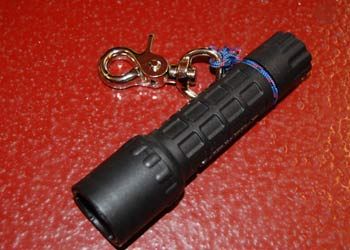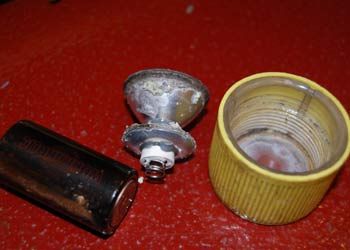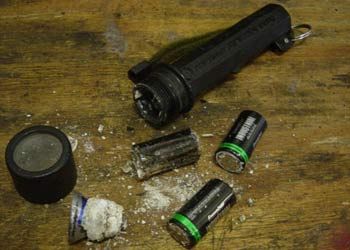For many years now, the fire service has reminded citizens to change their smoke detector battery when the clocks change. While that is a great reminder for them, we need to take notice ourselves. Change YOUR backup flashlight’s batteries!
Your backup flashlight is really not much different than a smoke detector. It’s something you may not even notice is around, but when you need it, it needs to work without fail (just like your smoke detector.)
The unfortunate thing about backup flashlights is that many of us will throw one in the pocket of our gear, and never think much about it.
When the time comes that we need it, we reach into our pocket, turn it on, and hope for the best. Your backup flashlight needs to be treated like any other piece of life safety equipment.
While that may sound a bit extreme, it should at least be treated with some consideration. Obviously we are all comfortable functioning in a zero visibility environment without a problem, but let’s save that for when it has to happen, not just because we didn’t maintain our flashlight.
Every one of us has had a rechargeable flashlight die within moments of it coming out of the charger. We certainly don’t always charge them within the manufacturer’s recommendations.
A non-rechargeable backup light lessens the likelihood of being without light when this occurs. If you don’t have one, GO GET ONE!
Traditionally alkaline batteries are the most common type used in non-rechargeable lights. However, lithium batteries are a far better choice. While lithium batteries are a bit more expensive, they last quite a bit longer.
 |
Pictured above is a small lithium battery powered backup light. This type of light is a great backup light. They are compact, have bright light, and fit easily into a pocket of your gear.)
We need to change our batteries periodically whether we use the flashlight or not. Changing the batteries once every other month is not a bad idea, or at a minimum, twice a year when the clocks change.
If these batteries still have some juice, they can be re-used in less important electronic devices around the house.
Another thing to consider is to write the replacement date on the batteries with permanent marker. This will remind you when the batteries were last replaced.
In between replacement, the battery compartment of your flashlight needs to be opened up and “burped” every now and then. Many of the fire department-style flashlights are waterproof for obvious reasons.
These flashlights tend to have sealed battery compartments in order to keep water out. An alkaline battery tends to “off gas” over time and ends up chewing the light apart from the inside out, like shown in the picture below.
Lithium batteries are not as susceptible to this corrosion. Have you ever seen a light not work because of corroded batteries? The buildup of gasses within the sealed battery compartment is likely the cause.
A simple fix to this corrosion problem is just to open the battery compartment from time to time and let everything breathe a bit. Some of the newer or higher-end flashlights have a one-way valve in the battery compartment to prevent this from happening.
However, we have on occasion, seen these valves get clogged with fireground debris and have even seen new flashlights ruined because they were not occasionally “burped.”
Pictured below is a light that is in the early stages of corrosion, you can see the battery has leaked, the lens has begun to cloud up and the bulb/reflector assembly is beginning to corrode.
 |
The following photo shows a light that has significant corrosion. This light was obviously non-operational due to the damage.
 |
Any piece of battery operated equipment can and will fail without warning! This is why we need to have a plan B.
With very little effort, it’s quite simple to always have a reliable flashlight on hand, and every one of us has had a moment where a little extra light could have made our jobs a whole lot easier.
Work smarter, not harder. Let us all take a moment to change OUR battery to ensure our plan B will work for us when needed.











